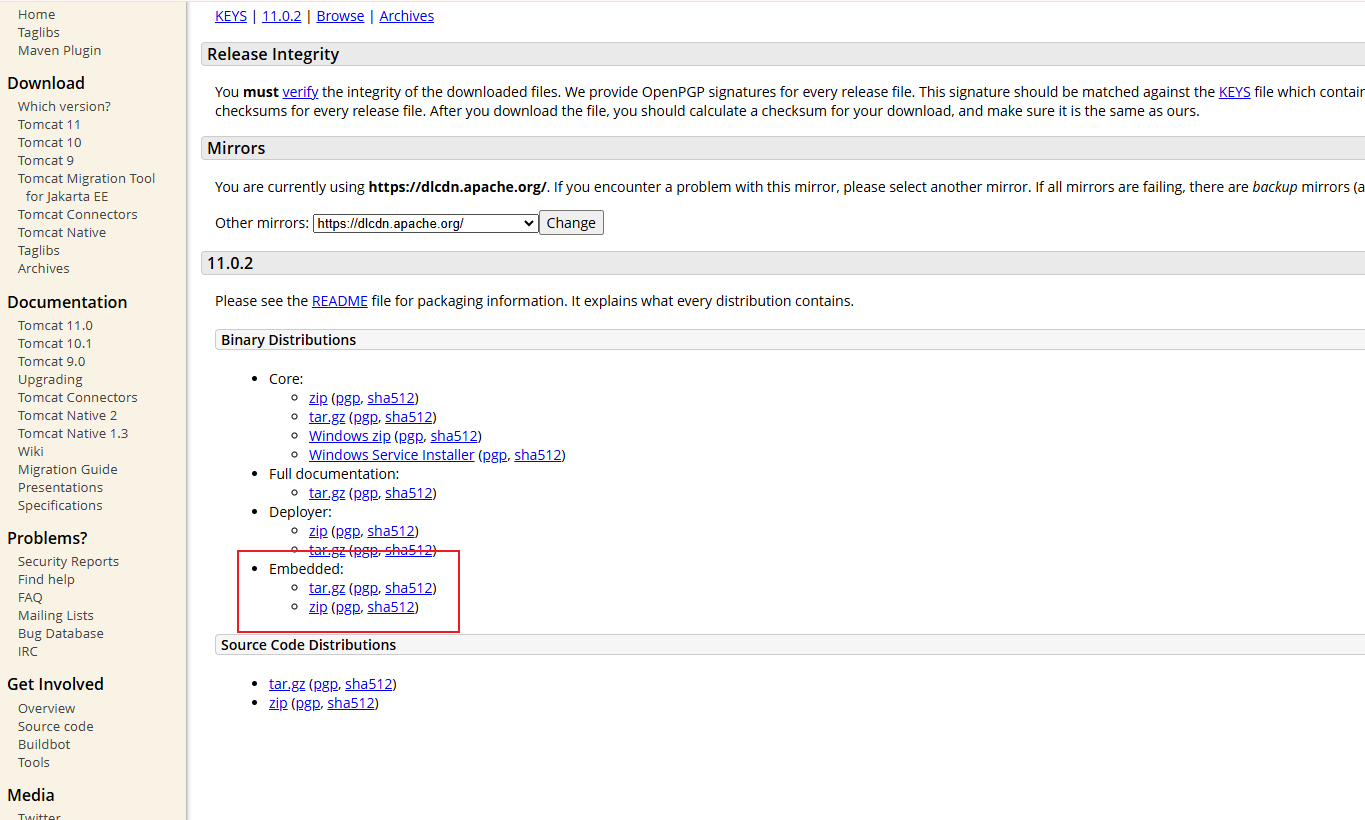web嵌入式容器
1. 什么是web嵌入式的容器
Web嵌入式容器是指在应用程序内部嵌入一个完整的Web服务器,使得应用程序可以直接运行而不需要依赖外部的Web服务器。这种设计简化了部署过程,提高了开发效率和灵活性。
嵌入式容器是一种将Web服务器功能嵌入到应用程序中的技术。通过这种方式,应用程序可以直接启动和管理自己的Web服务器,而不需要依赖外部的Web服务器。这种设计使得开发、测试和部署变得更加简单和快捷。
2. 常见的嵌入式容器
首先说明一点,我们在SpringBoot中使用的web嵌入式容器技术并不是SpringBoot提供的,而是容器的开发者提供的。
SpringBoot可以打成jar包独立进行运行正式得益于嵌入式容器的技术(他不是SpringBoot的技术\他不是SpringBoot的技术\他不是SpringBoot的技术)。
- **Tomcat**:Tomcat是一个广泛使用的Servlet容器,支持Servlet 3.0和Java EE 6规范。它通常用于生产环境,因其稳定性和高性能而受到青睐,下面就以tomcat为例
- **Jetty**:Jetty是一个轻量级的servlet容器,适合开发环境使用。它启动快、配置简单,特别适合快速开发和测试。
- **Undertow**:Undertow是JBoss团队开发的一个高性能Web服务器,支持异步处理和事件驱动模型,适合需要高并发处理的应用。
- **Netty**:Netty是一个基于Java NIO的异步事件驱动的网络应用框架,用于开发高性能、高可靠性的网络服务器和客户端程序。它通常用于Reactive Web应用。
嵌入式容器的优缺点
优点:
- 简化部署:不需要单独部署Web服务器,减少了配置和维护的复杂性。
- 提高开发效率:开发人员可以更快地迭代和测试代码,无需等待外部服务器的启动。
- 更好的集成:嵌入式容器可以更好地与应用程序的其他部分集成,提供更灵活的控制。
缺点:
- 资源消耗:嵌入式容器可能会消耗更多的内存和CPU资源,尤其是在生产环境中。
- 性能限制:与专业的Web服务器相比,嵌入式容器的性能可能有所不足,特别是在高并发场景下。
3. Tomcat容器
嵌入式容器

image-20250210132046302 使用示例
基本运行环境(dependency)[embed-core 模块支持基本环境运行
<dependency> <groupId>org.apache.tomcat.embed</groupId> <artifactId>tomcat-embed-core</artifactId> <version>10.1.18</version> </dependency>嵌入式 Tomcat API 使用方式,SpringBoot的容器启动方式可参考此处
package com.example.springwebmvc.config; import org.apache.catalina.Context; import org.apache.catalina.LifecycleException; import org.apache.catalina.connector.Connector; import org.apache.catalina.startup.Tomcat; import java.io.File; public class EmbedTomcatServer { public static void main(String[] args) throws LifecycleException { Tomcat tomcat = new Tomcat(); tomcat.setPort(8080); // 获得 EmbedTomcat 服务器 8080 端口连接 Connector connector = tomcat.getConnector(); String docBase = new File("src/main/java").getAbsolutePath(); System.out.println("docBase = " + docBase); // 设置容器的contextPath Context context = tomcat.addContext("/web", docBase); // 设置 servlet 和 servlet的路径映射 String servletPath = "org.example.embed.servlet.EmbedServlet"; tomcat.addServlet("/web", "embed", servletPath); context.addServletMappingDecoded("/embed", "embed"); // 编程式 唤醒 ServletContainerInitializer,这里用到了SCI,需要了解SCI技术 context.addServletContainerInitializer(new EmbedServletContainerInitializer(), null); // 开始启动 tomcat.start(); // 挂起,等待请求 tomcat.getServer().await(); } }EmbedServlet.java
package com.example.springwebmvc.config; import jakarta.servlet.ServletException; import jakarta.servlet.http.HttpServlet; import jakarta.servlet.http.HttpServletRequest; import jakarta.servlet.http.HttpServletResponse; import java.io.IOException; public class EmbedServlet extends HttpServlet { @Override protected void doGet(HttpServletRequest req, HttpServletResponse resp) throws ServletException, IOException { resp.getWriter().println("EmbedServlet . "); } }EmbedServletContainerInitializer.java
package com.example.springwebmvc.config; import jakarta.servlet.ServletContainerInitializer; import jakarta.servlet.ServletContext; import jakarta.servlet.ServletException; import java.util.Set; // 这里需要了解SCI技术 public class EmbedServletContainerInitializer implements ServletContainerInitializer { @Override public void onStartup(Set<Class<?>> initializer , ServletContext servletContext) throws ServletException { assert initializer == null; assert servletContext == null; String contextPath = servletContext.getContextPath(); System.out.println("contextPath = " + contextPath); // 逻辑是 获得 ServletContext 然后做点儿什么 ?[通常是高端操作] } }